Text




Reminder: learning isn’t supposed to make you feel bad. Sometimes the """right""" way doesn’t work and it’s alright. There is beauty to be found in chaos.
.
2K notes
·
View notes
Text
I feel like, we as a society, don't talk enough about people messing up needle felting.
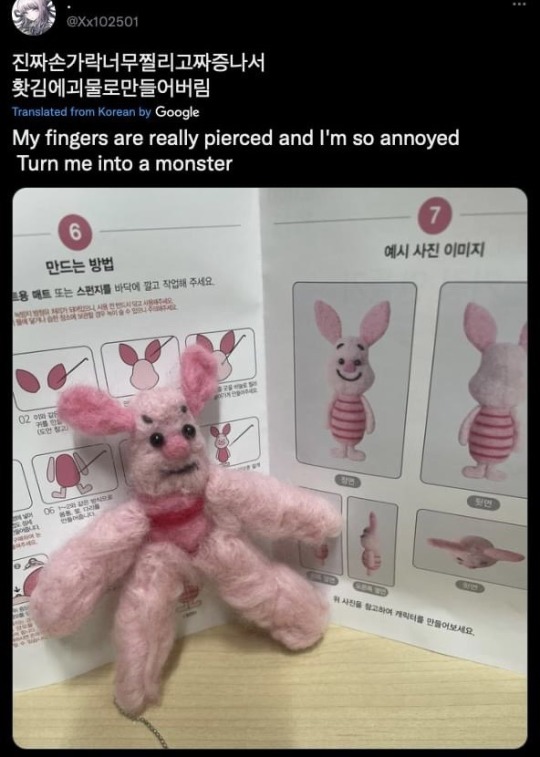

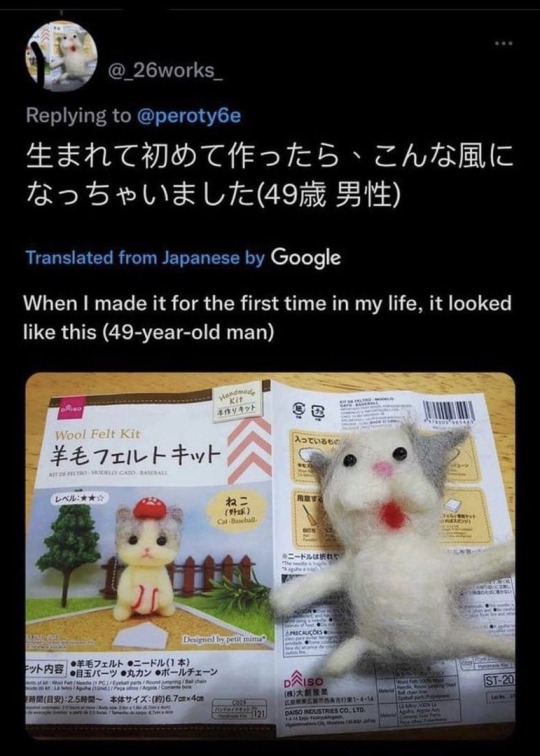
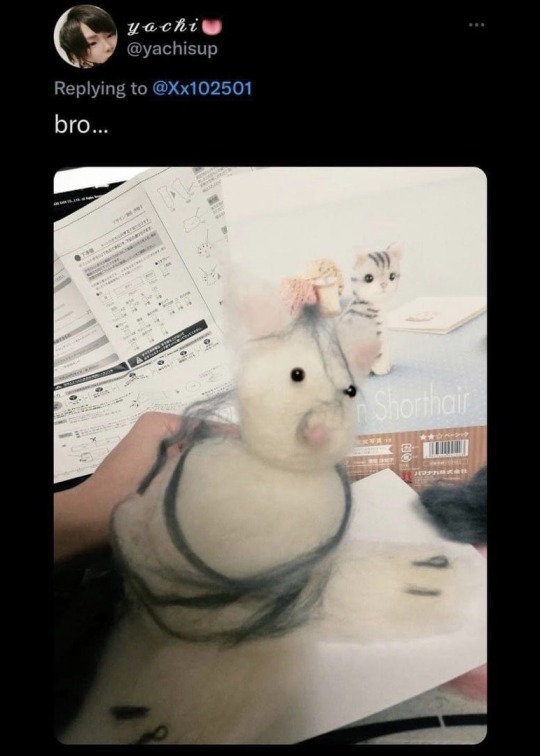


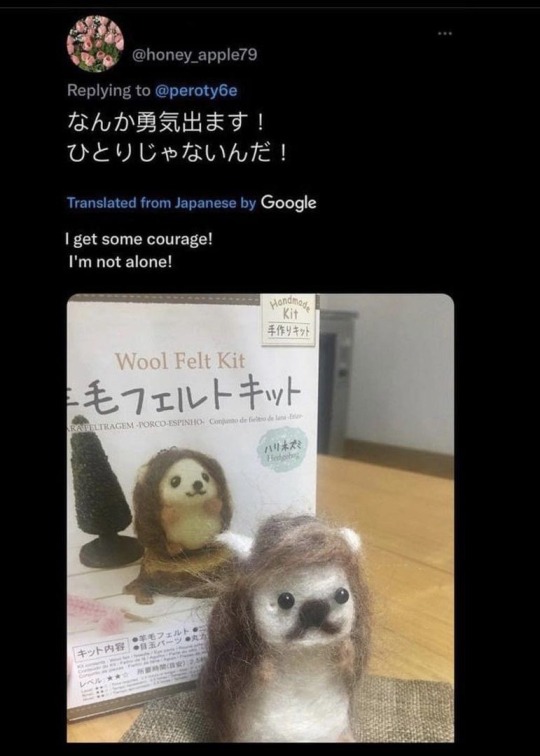
88K notes
·
View notes
Text
this tiktok is gonna cure coronavirus
142K notes
·
View notes
Text
Japanese Apps instead of Duolingo
Beelinguapp
Bluebird
Bunpo
Busuu
Clozemaster
Drops
HeyJapan
Hiragana Quest
Infinite Japanese
kawaiiDungeon
Ling
Lingodeer
Lingopie
Lingvist
LingQ
LyricsTraining
Mango
Mondly
Oyomi Japanese Reader
renshuu
Takoboto Japanese Dictionary
Todaii
Qlango
Write It! Japanese
587 notes
·
View notes
Text
JLPT Grammar げ・がち・っぽい・気味
What is the difference in usage among げ、がち、っぽい、and 気味? These grammar points can be difficult to differentiate, so I have gathered some notes and examples here. These grammar points are JLPT N3/N2 grammar points.
★~げ★
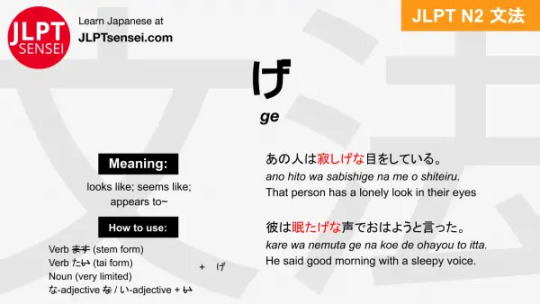
This is used it to describe something or someone (not yourself) who looks~ / seems~ / appears to~.
It is similar to そうに・そうな (sou ni / sou na), but げ (ge) is much more restricted with what words it can be paired with.
It is usually used to describe things like one’s emotions or state of being, whereas そう (sou) can be used with more general things like weather, etc.
Although this grammar is mostly used with adjectives, it can also be used with some verbs and nouns.
何か、言いたげだね。
They look like they want to say something.
ずいぶん、自信ありげだね。
You seem very confident.
そりゃあちょっとあやしげに見えますからね、そう思いませんか?
Well, that looks a little suspicious, don't you think?
同級生にテストの結果を聞くと、嬉しげな顔で100点だったと答えてくれた。
When I asked my classmate how they did on the test, they answered with a happy face that they got a perfect score.
★~がち★
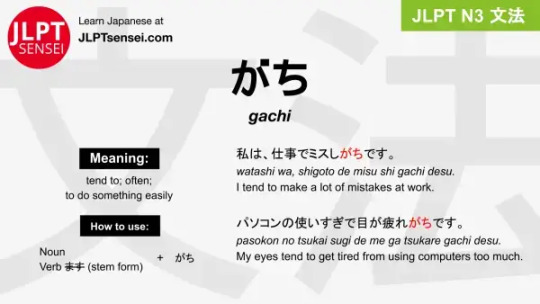
This is usually used for something negative.
ありがち = tend to have
になりがち = tend to become ~
遅れがち = tend to be late
留守がち = tend to be absent
彼は、学校をサボりがちです。
He is always skipping school.
ずっと曇りがちの天気が続いている。
The constant cloudy weather keeps continuing.
一人暮らしなので、コンビニ弁当ばかり食べがちだ。
I live alone, so I tend to only eat convenience store meals.
私は空腹の時は機嫌が悪くなりがちだ。
When I am hungry I easily get into a bad mood.
★~っぽい★

① When following a noun or い-adjective, this means -ish, -like, -ly. Note: The number of adjectives that can be used with this are limited.
子供っぽい = childish, childlike
男っぽい = manly, like a man
女っぽい = womanly, like a woman
油っぽい = oily, lots of oil
② When following a verb, this means easy to do, or often do~. Note: This cannot be used with all verbs.
忘れっぽい = easy to forget, often forget
怒りっぽい = easy to anger, often angry
このコート、デザインはい��けれど、生地が安っぽいね。
This coat has a nice design, but the material looks cheap.
油っぽい食事は好きじゃない。
I don't like oily foods.
年を取ると、忘れっぽくなる。
As you get older, you become more forgetful.
君は飽きっぽいから何事も成功しないのだ。
You do not succeed in anything because you are quick to lose interest.
★~気味 (ぎみ)★
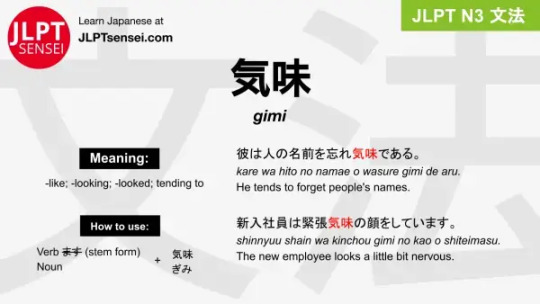
This is used to express that something looks or seems to be a certain way.
疲れ気味 【つかれぎみ】= looks / seems tired.
太り気味 【ふとりぎみ】 = looks / seems large
遅れ気味 【おくれぎみ】= tends to be late
寝不足気味 【ねぶそくぎみ】= looks / seems to be sleep deprived
残業続きで疲れ気味だ。
I've been feeling rather tired because of continuous overtime work.
新入社員は緊張気味の顔をしていた。
The new employee looked nervous.
彼は人の名前を忘れ気味である。
He tends to forget people's names.
彼女は遠慮気味にそう言った。
She said that hesitantly.
109 notes
·
View notes
Text
Japanese Phrases for Restaurants
Restaurants in Japan can be intimidating if you are unsure of your Japanese ability or how to navigate them. Here are some easy phrases to help you navigate common situations. (For more restaurant vocabulary & phrases, check my post HERE).

1. すみません sumimasen Excuse me
Usually wait staff will greet you at the entrance and guide you to a table, but if no one is there, you don't have to stand and wait forever. Using sumimasen will help to get their attention politely.
You can also use this to get the wait staff's attention. Raising your hand and calling out sumimasen will let them know you'd like them to come over.
If you don't understand something they are saying, you can also use this phrase as a question: sumimasen? They will repeat what they said or try to communicate it differently for you.
2. 二人です ふたりです futari desu For two
This phrase tells the staff that you have two people in your party. Usually they will ask you before seating you (何名様ですか? nan mei sama desu ka?) and you can use your fingers to indicate, or say one of the following:
一人です ひとりです hitori desu one person
二人です ふたりです futari desu two people
三人です さんにんです san nin desu three people
四人です よんにんです yon nin desu four people
3. おすすめは何ですか? おすすめはなんですか? osusume wa nan desu ka? What do you recommend?
Use this to get suggestions from the staff, especially if you are overwhelmed by the menu.
4. これは何ですか? これはなんですか? kore wa nan desu ka? What is this?
If you don't know what something is, ask! It beats trying to figure it out on your own as you get hungrier and hungrier.
5. これ、お願いします これ、おねがいします kore, onegai shimasu This one, please
Use this to point to something you would like, such as a photo or sample. You can also use これください (kore kudasai) which has the same meaning.
6. ベジタリアンメニューはありますか? Bejitarian menyu wa arimasu ka? Do you have a vegetarian menu?
You can use ~はありますか? (~ wa arimasu ka) to ask for various things.
7. たまごぬき、できますか? tamago nuki, dekimasu ka? Can you make it without egg?
If you have food restrictions, you can ask for menu items without certain ingredients by using ~ぬき、できますか? (~ nuki, dekimasu ka?). In my experience, often smaller restaurants won't let you change the ingredients, but you can always ask. If they can't make it without something, you can ask if they have a menu item without the ingredient by using ~ぬきのメニューはありますか? (~ nuki no menyu wa arimasu ka?) or "Do you have anything without ~?"
If you'd like to explain that you can't eat a particular ingredient, you can say ~が食べれません (~ ga taberemasen) which means "I can't eat ~."
If you have an allergy, be careful when ordering in a restaurant that serves food with your allergen. In Japanese, food allergy is 食物アレルギー (shokumotsu arerugii).
8. 持ち帰りにできますか? もちかえりにできますか? mochi kaeri ni dekimasu ka? Can I get this to go?
In most Japanese restaurants, they will not do to-go after you have started eating the meal for hygiene reasons, but you can always try asking.
9. 別々にできますか? べつべつにできますか? betsu betsu ni dekimasu ka? Can we pay separately?
Most izakaya (pubs) won't allow you to pay separately, but you can always ask.
10. ごちそうさまでした gochisou sama deshita Thank you for the meal
This phrase is used after eating in Japan, and if you use it as you leave the restaurant, you will let them know you enjoyed your meal.
532 notes
·
View notes
Text
Podcast Review: ことのは

Podcast Title: 日本語の会話のpodcast −ことのは−
(にほんごのかいわのpodcast −ことのは−)
Available On: Spotify, YouTube
Ease of Listening: ★★★★★
Length of Episodes: ★★★★★
Level of Engagement: ★★★★★
Episode Frequency: ★★★★★
Overall: ★★★★★
Today I will be reviewing the Japanese conversation podcast ことのは (Kotonoha) by Yamamo-sensei and Kibi-sensei. They have episodes for all levels, separated by JLPT level N5-N1 and labeled so you can determine which episodes best suit your level or challenge yourself with a higher level.
Do I currently listen to this podcast?: Yes, I like this podcast a lot and listen to it frequently.
General Overview
Good For Levels: Beginner | Intermediate | Advanced
In this series, Yamamo and Kibi, two Japanese language teachers based in Japan, speak on a variety of topics in a conversation style of podcast. The conversation-style format is good for training your ear to listen to questions and responses, and every day banter between two speakers. They talk about Japanese culture and their own personal experiences which gives listeners an insight to the particulars of daily life in Japan.
Length of Episodes ★★★★★
The podcasts are usually around 20-30 minutes long. This is ideal for a commute or when you have some down time. They cover 2-3 subtopics within each topic they pick, so the conversations are very interesting and catch my attention and they don't seem too short or too long. They plan out each conversation topic carefully and keep it interesting and informative.
Level of Engagement ★★★★★
The conversation format is very engaging because they cover 2-3 subtopics within the main topic and structure the conversation to focus on each point of the topic. They keep the listener engaged with carefully planned-out topics and conversations, and there is obviously a lot of work that goes into their podcast. They match the vocabulary and pace of speaking with the level they are targeting, but even in the higher level podcasts I believe beginners would be able to catch the general flow of the conversation and challenge themselves to understand the content.
Episode Frequency ★★★★★
New podcasts come out once a week, and with the planning that goes into each episode it's a very good pace. There is also a lot of episodes already produced so you can go through them fairly quickly without running out of material.
Overall ★★★★★
This podcast is designed by two Japanese language teachers to convey information about Japanese culture completely in Japanese. The episodes are labeled by JLPT difficulty and I find the label system to be very accurate. It is a good podcast with which to practice your listening skills for every day conversation and to learn a bit more about Japanese culture.
105 notes
·
View notes
Text
How to learn Kanji & vocab easily?
Today we will guide you how to learn Kanji and Japanese words effectively!
26 notes
·
View notes
Text

📣 Want some Japanese #PDF lessons about travel, music, cooking, slang, business, emergency...? 📩 Get them all for FREE here: https://www.japanesepod101.com/learn-with-pdf/?src=tumblr_image_pdf_040924
7 notes
·
View notes
Text
Vocabulary and sentence composition exercises #1
Vocab
気がつく (きがつく)- to realize
蹴る (ける) - to kick
刺す (さす) - to sting; to bite
触る (さわる)- to touch; to feel
捕まる (つかまる)- to be arrested; to be caught
包む (つつむ)- to wrap; to cover
殴る (なぐる) - to strike; to hit; to punch
sentence
気がつく - 父がレストランでスマホを忘れられちゃった。
蹴る - 今日は、弟に店で自分を蹴られちゃった。
刺す - 蜂(はち)に刺されちゃった。
触る - これを触ってみてもいいですか?
捕まる - 彼は捕まった。
包む - バッグでサンドイッチを包んでおく。
殴る - 娘に殴られちゃった。
31 notes
·
View notes
Text
海象
せいうち; セイウチ
walrus
妖精
ようせい
fairy; sprite; elf
誰かがあなたの部屋のドアをトントンした時、その相手が海象の時と妖精の時とだったらどっちの方が驚きですか?
だれかがドアにトントンしたら、せいうちかようせいだったらどっちのほうがもっとおどろきますか?
If someone knocked on your door, would you be more surprised if it was a walrus or a fairy?

50 notes
·
View notes
Text
How To Read and Understand Japanese Sentences.
As you know, Japanese language is a SOV (Subject-Object-Verb) pattern while English is SVO pattern.
Some learners may know a good amount of vocabulary words but they still cannot understand the meaning of a sentence even if they know how to read every single word in that sentence. Why is that so?
This may be due to learners reading the wrong way. In order to understand Japanese sentences, follow the following steps:
1. Identify the subject with the noun followed by either a は or が. (Usually in the beginning of a sentence but there are some writers who purposely put the subject in the middle.)
2. Read the end of the sentence to locate the verb. Yes, you read this right. Just go straight to the end of the sentence to identify the verb.
Example:
私はその人を常に先生と呼んでいた。
In this sentence, the subject is 「私は」。Next, go straight to the end and identify the verb
Here, the verb is 「呼んでいた」 which means "called".
So now, you know what the subject is doing with 私は and 呼んでいた which means "I called."
Next, read the rest of the middle part 「その人を常に先生と…」 meaning "that person always teacher"
The whole sentence means "I always called that person as teacher."
Note: This sentence is the first opening line from the Japanese classic literature novel 「こころ」 by 夏目漱石。
43 notes
·
View notes
Text
欲張り
よくばり
greed, avarice, covetousness, greedy person
持てば持つほど、欲張りになる。
もてば もつ ほど、よくばり に なる。
The more you have, the more you want.

28 notes
·
View notes
Text
日本語を勉強の初期段階の間に中国語がわかってこと有益だってに気づいた。
日曜日 (にちようび) 日 🌞sun day, ニ suns
月曜日 (げつようび) 月🌙 moon day, げつ, getting dark out
火曜日 (かようび) 火🔥 tinder… Tuesday かmpfire
水曜日 (すいようび) 水💧water… Wednesday ㄕㄨㄟˇようび
木曜日 (もくようび) 木🪵 wood… goes thud? Thursday? も, ㄇㄨˋ
金曜日 (きんようび) 金💰gold… money… Friday is payday, 金門, きん
土曜日 (どようび) 土 dirt/ground… sit on the ground… SATurday sand, dirt ど
14 notes
·
View notes
Text
レタスクラブ
I wanted to recommend レタスクラブ to advanced Japanese learners.

レタスクラブ (Lettuce Club) is a site that has both レシピ and 読み物 that someone introduced me to recently. I came for the 読み物, but the レシピ looks good too.
I have been reading through some of the comics under the 読み物 section 趣味, which has a variety of artists and themes to choose from. This is definitely a site for advanced readers, but if you'd like to try to navigate around the site you can practice reading.
Start Here for Comics, then try:
趣味
くらし
育児・子育て
Happy reading!
100 notes
·
View notes
Text
my friend and i were going to study a language together and wound up having to cancel our plans due to scheduling pressures, but! through research we came across a really cool resource for reading in a TON of languages: bloom library!
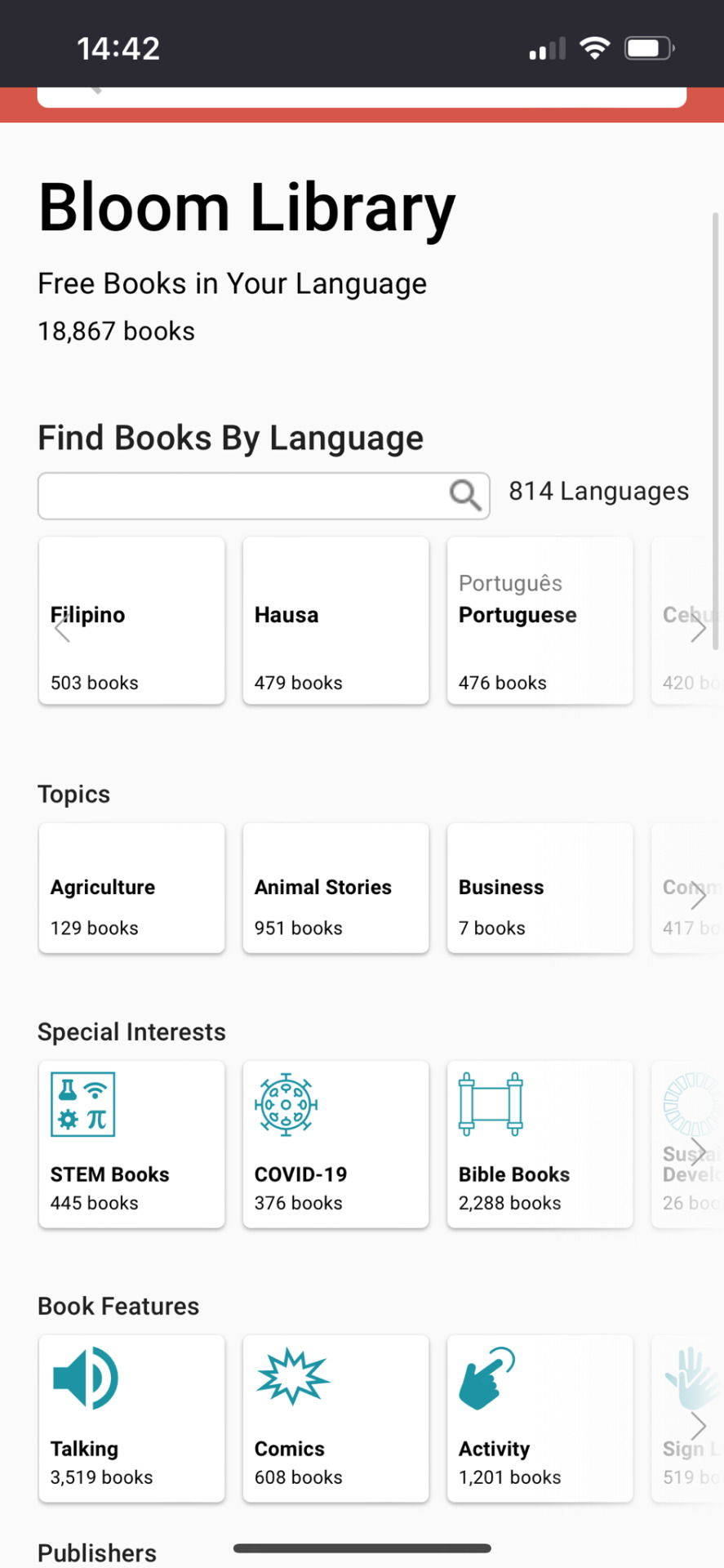
as you can see, it has a lot of books for languages that are usually a bit harder to find materials for—we were going to use it for kyrgyz, for example, which has over 1000 books, which was really hard to find textbook materials for otherwise. as you can see it also has books with audio options, which would be really useful for pronunciation checking. as far as i can tell, everything on the site is free as well.
2K notes
·
View notes